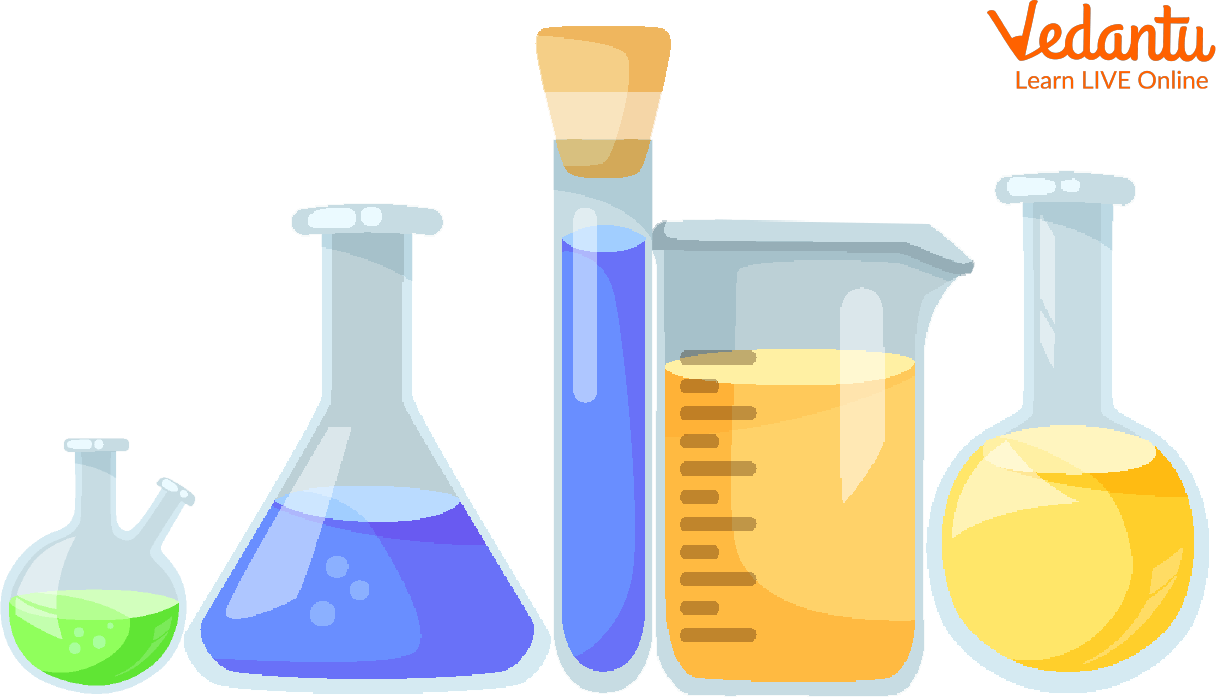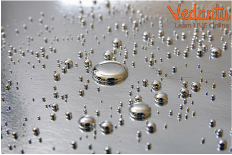




Introduction to Different Types of Chemicals
You will be amazed to know that the chemicals around are also made by humans. And on the contrary, humans are also made up of chemicals. Isn't this interesting?
On earth, there are millions of chemicals. Some are found in nature, and some are made by people. Every day we use them in many different ways. It is also important to know that they are harmful to people if not used properly. In this article, we will talk about the definition of chemicals, their types, and examples. We will also discuss a few questions which are very frequently asked.
What is a Chemical?
A substance that has specific properties which we can use to identify it is called a chemical. Sometimes they may interact with other substances and change their form. Different chemicals show different types of properties and characteristics.

Chemicals
Different Types of Chemicals
Broadly, chemicals can be classified into two categories - natural and man-made which are explained below in detail along with the examples of chemicals:
Natural Chemicals
Chemicals that are given to us by nature are known as natural chemicals. For eg- water is a natural chemical as it depicts unique properties which can be used to identify it. Water is widely used in laboratories as a natural chemical.

Natural Chemical
Man-made Chemicals
Chemicals that are made by humans in order to satisfy particular wants are known as man-made chemicals. For example - chlorine is a man-made chemical with various disinfectant properties.
Examples of Natural Chemicals
Arsenic is in water: It is an element that is found naturally in the Earth’s crust. Sometimes some amounts of arsenic are found in rock, soil, water, and air. When it combines with other chemical elements, it forms compounds (chemical mixtures).
Lead: Lead(Pb) is a soft metal that exists naturally in the environment. In the past, it was used in products like house paint, pesticides(kill pests), and gasoline. In the 1970s, science showed that lead is highly toxic to human beings, mostly children. Our government passed laws that limit the use of lead, but it is still used in the environment.
Liquid metal: Mercury: Mercury is a metal that is only found in a liquid state. It is also sometimes called quicksilver. It is a natural metal. It is a shiny surface, a silver liquid that can evaporate into an invisible gas. Since no one can not see it, it is easy to breathe in without knowing it.
Examples of Man-Made Chemicals
Chlorine: Chlorine is a man-made chemical that is widely used in our day-to-day activities. The water in swimming pools is disinfected with chlorine. It is also used in treating sewage and industrial waste.
Various kinds of pesticides and fungicides are also made by humans in order to boost agriculture and crop production.
All types of cosmetics are also man-made chemicals used for different purposes.
What are Substances?
A substance is a matter which has definite properties and chemical composition. This means that the properties are fixed and their composition is also determined. A pure substance is one that is made up of only one type of particle. Some examples of substances are Water, Sugar and copper wire, etc.
Summary
In this article, we learned about Chemicals and their types. We discussed man-made and natural chemicals along with their examples. Natural chemicals include water, lead, mercury, and man-made chemicals include chlorine, all types of cosmetics and body sprays, and various pesticides and fungicides. We noticed that there are so many chemicals around us that we are unaware of. A chemical is made up of the same "stuff." Many occur in nature like water. Many are man-made and are manufactured like chlorine. In Fact, we Human beings are also made up of a wide variety of chemicals.
FAQs on All about Chemicals and Their Properties
1. Name some real-life examples of chemicals.
In our surroundings, almost everything is made up of chemicals. Out of many real-life examples of chemicals, some of them are listed below:
Toothpaste - It includes Calcium carbonate and sodium fluoride.
Salt - This includes Sodium Chloride.
Graphite - It is the purest form of Carbon.
Vinegar - It includes Acetic acid.
Sugar - The chemical name of Sugar is Sucrose.
Perfume - Common ingredients found in body spray include such as butane, isobutane, propane, alcohol, and perfume.
2. Is cutting hair a chemical change?
Cutting of hair is probably a physical change because: No new substance is formed.
3. Is colour a chemical property?
Characteristics such as melting point, boiling point, density, solubility, colour, odour, etc. are physical properties. Properties that describe how a substance changes identity to produce a new substance are chemical properties.









